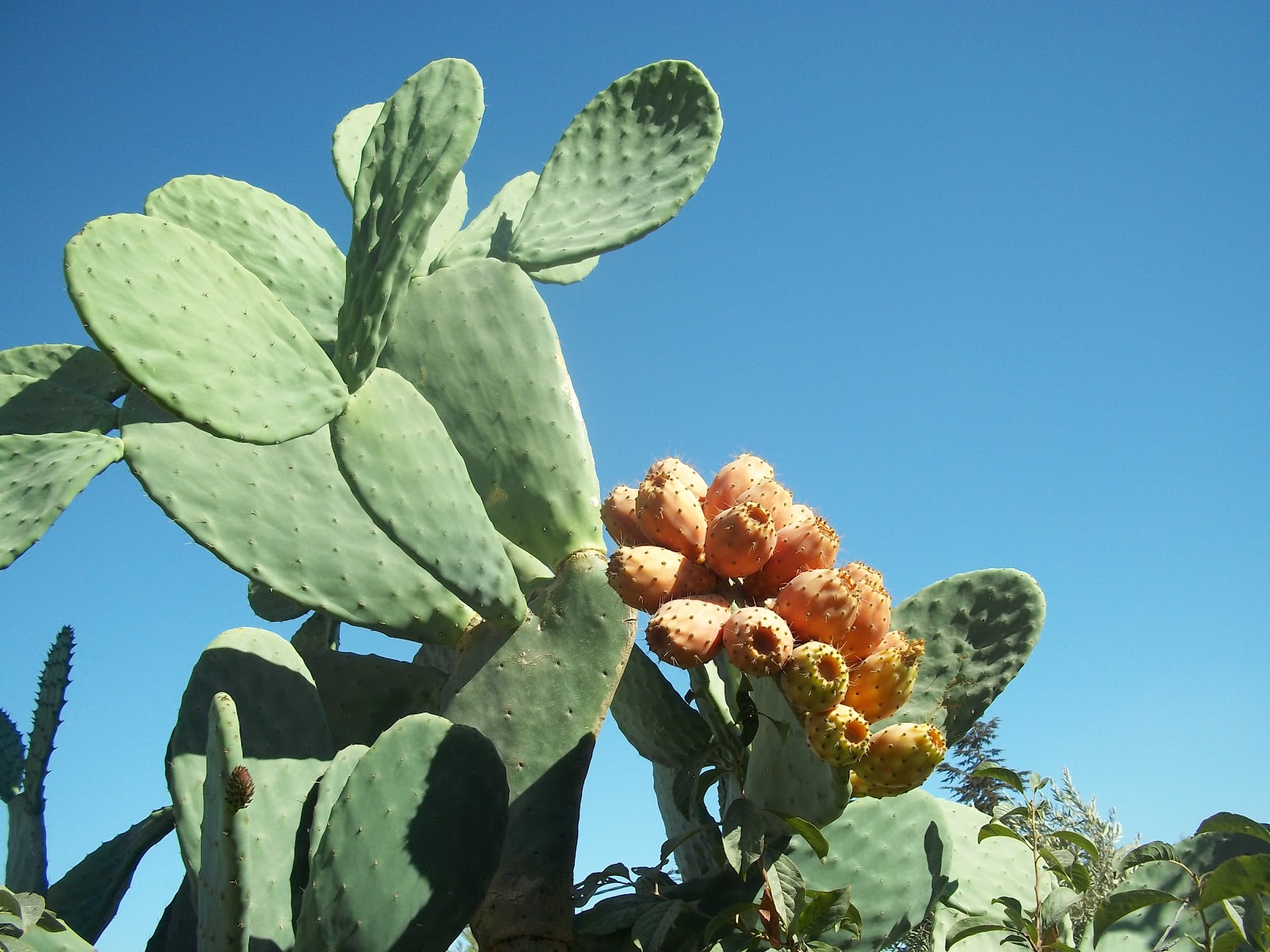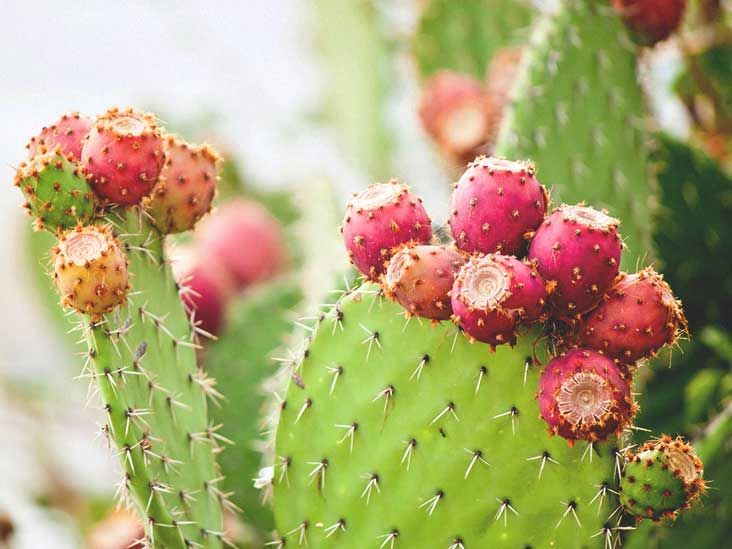Yes, cactus can be beneficial for diabetes as it helps minimize blood sugar spikes and supports healthy glucose levels. Including prickly pear cactus in the diet can provide natural support for individuals with diabetes.
Cactus, particularly prickly pear cactus, offers promising nutritional benefits for people with diabetes. The high fiber content helps in regulating blood sugar levels and reducing post-meal glucose spikes. This natural approach to managing diabetes provides an alternative to traditional medication, making it a popular choice for those seeking natural remedies.
However, it’s important to consult with a healthcare professional before incorporating cactus into the diet, especially for individuals with pre-existing medical conditions. Embracing the potential of cactus in managing diabetes showcases the growing interest in natural and holistic approaches to health and wellness.

Credit: www.vallartadaily.com
Cactus And Diabetes Connection
The cactus plant, specifically the prickly pear cactus (Opuntia), has gained attention for its potential benefits in managing diabetes. This connection stems from the cactus’s unique nutritional profile and its impact on blood sugar levels.
Cactus Nutritional Profile
Cactus is rich in essential nutrients that can support overall health and potentially benefit individuals with diabetes. Here is a breakdown of its nutritional profile:
| Nutrient | Amount per 100g |
|---|---|
| Fiber | 5g |
| Vitamin C | 14mg |
| Potassium | 220mg |
| Magnesium | 85mg |
| Calcium | 56mg |
Blood Sugar Impact
One of the key concerns for individuals with diabetes is managing blood sugar levels. Cactus can potentially aid in this regard due to its impact on blood sugar. The high fiber content in cactus helps minimize blood sugar spikes after meals, promoting a more balanced glucose response. Additionally, the presence of certain compounds in cactus may contribute to improved insulin sensitivity.
However, it is important to note that individual responses may vary, and it is always recommended to consult with a healthcare professional before making any significant dietary changes.
Prickly Pear Cactus: A Closer Look
Prickly pear cactus, also known as Opuntia, is a type of cactus that has been studied for its potential benefits in managing diabetes. It is known for its edible fruits and flat, pad-like stems. The plant has been a part of traditional medicine for centuries, particularly in regions like Mexico and the southwestern United States.
Key Components For Diabetes Management
Prickly pear cactus contains a variety of components that may be beneficial for diabetes management. These include:
- Fiber: Helps to minimize blood sugar spikes after meals
- Antioxidants: May help reduce inflammation and oxidative stress
- Vitamins and minerals: Including vitamins A and C, magnesium, and potassium
Scientific Studies And Results
Several scientific studies have looked into the effects of prickly pear cactus on diabetes. Some of the findings include:
- A study published in the Journal of the Science of Food and Agriculture found that prickly pear extract reduced blood sugar levels in diabetic mice.
- Research published in the Journal of Ethnopharmacology suggested that prickly pear may improve insulin sensitivity in individuals with type 2 diabetes.
- Another study in the Journal of the Academy of Nutrition and Dietetics reported that consuming prickly pear extract before a carbohydrate-rich meal helped lower blood sugar levels in individuals with type 2 diabetes.
Consumption Guidelines
According to research, cactus can be beneficial for individuals with diabetes due to its high fiber content. Including prickly pear cactus in the diet can help minimize blood sugar spikes after meals and support healthy blood sugar levels. However, pregnant women and individuals with diabetes should be cautious when consuming cactus or cactus supplements as it can affect blood sugar levels.
Ideal Quantities And Forms
When consuming cactus for diabetes, consider small portions.
- Start with half a cup of cooked cactus pads.
- Gradually increase to one cup per day.
Preparation Methods
There are various ways to prepare cactus for consumption:
- Grill or sauté cactus pads with minimal oil.
- Add raw cactus to salads for a crunchy texture.
- Blend cactus into smoothies for a nutritious boost.
Health Benefits Beyond Blood Sugar
Discover the health benefits of cactus beyond blood sugar. With its high fiber content, cactus can help minimize glucose spikes after meals, offering a natural way to support healthy blood sugar levels, especially beneficial for individuals managing diabetes.
Health Benefits Beyond Blood Sugar
Cactus, also known as nopal, has been gaining popularity among people with diabetes due to its potential blood sugar-lowering effects. However, the health benefits of cactus go beyond just managing blood sugar levels. Let’s explore some of the other ways cactus can benefit your health.
Weight Management
Cactus is a low-calorie and high-fiber food that can aid in weight management. The high fiber content can make you feel full for longer periods, reducing your overall calorie intake. Additionally, cactus contain antioxidants and anti-inflammatory compounds that can help reduce inflammation in the body, which has been linked to obesity.
Cholesterol and Heart Health
Studies have shown that cactus can help reduce cholesterol levels in the body. The high fiber content in cactus can bind to cholesterol and prevent it from being absorbed into the bloodstream. This can reduce the risk of heart disease and stroke.
Moreover, cactus contain flavonoids and betalains, which are potent antioxidants that can protect the heart from oxidative damage. These compounds can also help improve blood vessel function and reduce inflammation, further promoting heart health.
In conclusion, cactus is not only beneficial for managing blood sugar levels in people with diabetes but also has numerous health benefits beyond that. Adding cactus to your diet can aid in weight management, reduce cholesterol levels, and promote heart health. So, why not give it a try?
Potential Risks And Side Effects
While cactus can offer potential benefits for individuals with diabetes, there are some risks and side effects to consider. It’s important to be aware of these factors before incorporating cactus into your diet.
Interactions With Medications
When consuming cactus, it’s crucial to be mindful of any potential interactions with medications. Certain medications used to manage diabetes, such as insulin or oral hypoglycemic agents, may interact with cactus, leading to fluctuations in blood sugar levels. Consult with a healthcare professional to determine the safety of incorporating cactus into your diet while taking diabetes medications.
Precautions For Specific Populations
Specific populations, such as pregnant women or individuals with certain health conditions, should exercise caution when considering cactus consumption. Pregnant or breastfeeding women should avoid cactus supplements due to limited safety information. Additionally, individuals with diabetes should closely monitor their blood sugar levels when consuming cactus, as it may impact glucose regulation. Always seek guidance from a healthcare provider before making dietary changes involving cactus.
Cactus Juice And Smoothies For Diabetics
Discover the refreshing world of cactus juice and smoothies, offering a natural way to manage diabetes while enjoying delicious flavors.
Recipes For Blood Sugar Control
Try these simple and tasty cactus juice and smoothie recipes to help regulate blood sugar levels:
- Prickly Pear Cactus Juice Blend
- Cactus Pear Smoothie with Greek Yogurt
- Minty Cactus Cooler
Digestive Benefits
Aside from blood sugar control, cactus juice and smoothies also provide digestive benefits:
- Rich in fiber for improved digestion
- Supports a healthy gut microbiome
- Aids in nutrient absorption
Comparative Analysis
Prickly pear cactus has shown promise in managing diabetes by reducing blood sugar spikes after meals. The high fiber content helps promote balanced glucose levels, making it a potential natural support for individuals with diabetes. However, caution is advised for pregnant women and those with diabetes when consuming cactus or its supplements.
Comparative Analysis:
When it comes to managing diabetes, the food choices you make can have a significant impact on your blood sugar levels. With so many options available, it can be challenging to determine which foods are best for your health. In this article, we’ll take a comparative look at cactus and other diabetic foods to see how they measure up in terms of fiber and glycemic index.
H3: Cactus vs. Other Diabetic Foods
Cactus, also known as nopales, is a popular Mexican vegetable that has been used for centuries to promote health and well-being. One of the reasons for its popularity is its low glycemic index, which means it has a minimal impact on blood sugar levels. In comparison, other diabetic foods like rice, pasta, and potatoes have a higher glycemic index and can cause blood sugar spikes.
H3: Fiber and Glycemic Index Comparison
Cactus is also an excellent source of dietary fiber, which helps regulate blood sugar levels and promotes digestive health. One cup of cooked cactus contains about 5 grams of fiber, which is equivalent to one serving of whole grains. In comparison, other diabetic foods like white bread and sugary cereals have little to no fiber, which can cause blood sugar levels to fluctuate.
To summarize, cactus is a great option for individuals with diabetes looking to manage their blood sugar levels. Its low glycemic index and high fiber content make it an excellent addition to any diabetic diet. Compared to other diabetic foods, cactus stands out as a healthy and nutritious option. So, if you’re looking for a natural way to support healthy blood sugar levels, consider adding cactus to your diet today.
Personal Stories And Testimonials
Cactus, particularly prickly pear cactus, shows promise in supporting healthy blood sugar levels for individuals with diabetes. Its high fiber content helps minimize blood sugar spikes after meals, making it a natural and beneficial addition to their diet.
Many individuals with diabetes have experienced the benefits of including cactus in their diet. Here are some success stories:
Success Cases
One person from Arizona reported that after consuming prickly pear cactus daily for three months, their blood glucose levels significantly decreased. They also experienced a boost in energy and overall well-being.
Another individual from New Mexico mentioned that incorporating cactus into their meals helped them maintain healthy blood sugar levels, and they no longer needed as much medication to manage their diabetes.
Challenges Faced
While cactus has shown promise in supporting healthy blood sugar levels, some individuals may face challenges when consuming it. For example, those with a history of kidney stones may need to limit their intake of cactus due to its oxalate content. Additionally, pregnant women and individuals with certain medical conditions should consult with their healthcare provider before adding cactus to their diet.
It is important to note that personal experiences may vary, and cactus should not be used as a replacement for medical treatment. However, for those looking to complement their diabetes management plan with natural solutions, cactus may be worth considering.
Expert Opinions And Recommendations
Discover expert opinions on whether cactus is beneficial for diabetes. Prickly pear cactus can help manage blood sugar levels effectively, making it a promising natural option for individuals with diabetes seeking to support their health.
Endocrinologists’ Views
Endocrinologists recommend incorporating cactus into the diet of diabetic individuals. The high fiber content in cactus helps regulate blood sugar levels effectively. Consuming cactus can aid in maintaining a more stable glucose response after meals, making it a beneficial addition to diabetes management.
Nutritionists’ Diet Integration Tips
Nutritionists suggest including cactus in diabetic meal plans to enhance overall health. Cactus is low in calories and rich in essential nutrients, making it a nutritious choice for those with diabetes. It can be prepared in various ways, such as salads, smoothies, or stir-fries, offering versatility in diabetic-friendly recipes.

Credit: www.healthline.com
Future Research Directions
Research on the potential benefits of cactus for diabetes management has shown promising results. The high fiber content in cactus helps regulate blood sugar levels, making it a natural and healthy option for individuals with diabetes. Including prickly pear cactus in their diet can provide nutritional benefits and support overall glucose response.
Emerging Studies
The potential benefits of cactus for diabetes have piqued the interest of researchers, leading to emerging studies that delve into its efficacy in managing blood sugar levels. These studies aim to provide more comprehensive insights into the specific mechanisms through which cactus may exert its positive effects on diabetes.
Innovations In Diabetic Care
As the understanding of cactus as a potential aid for diabetes grows, there is an opportunity for innovations in diabetic care. This includes exploring the integration of cactus-based supplements or extracts into diabetic management protocols, potentially paving the way for more holistic and natural approaches to diabetes treatment.

Credit: www.amazon.com
Frequently Asked Questions
Can Diabetics Eat Cactus?
Yes, diabetics can eat cactus. The high fiber content helps minimize blood sugar spikes and supports healthy glucose levels. However, pregnant women and those with diabetes should consume cactus cautiously due to its potential impact on blood sugar.
Who Should Not Eat Cactus?
Pregnant or trying to become pregnant women and individuals with diabetes should avoid eating cactus.
How To Make Cactus Juice For Diabetics?
To make cactus juice for diabetics, you can try a Prickly Pear Nopal Smoothie. This juice can help improve digestion and glycemic index, supporting healthy blood sugar levels. Prickly pear cactus has high fiber content, which minimizes blood sugar spikes after meals.
Including it in the diet can be a natural way to support diabetics. However, pregnant women and those with diabetes should be cautious and consult a healthcare professional before consuming cactus.
Does Cactus Produce Sugar?
Yes, cacti produce sugar through photosynthesis using CAM photosynthesis, a unique process for succulents.
Wrap up
Incorporating prickly pear cactus into the diet holds immense promise for individuals with diabetes. The high fiber content of cactus helps minimize blood sugar spikes after meals, promoting a more balanced glucose response. Research has shown that prickly pear cactus can help reduce post-meal blood sugar spikes, making it a valuable addition to a diabetic diet.
By tapping into this natural means of supporting healthy blood sugar levels, individuals with diabetes can benefit from the nutritional advantages of cactus.

